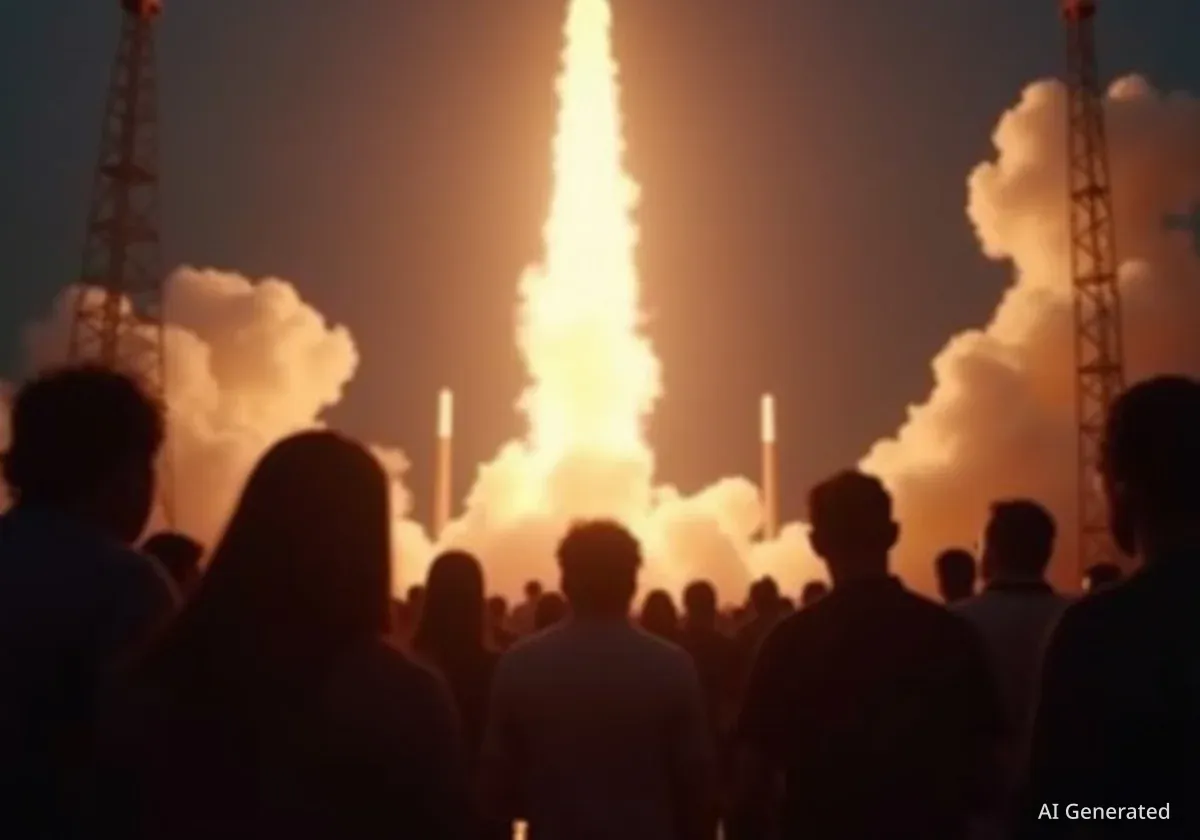The White House has proposed a significant budget reduction for NASA in fiscal year 2026, calling for a 24.3% cut that would lower the agency's funding to its lowest level since 2015. The proposal, which would decrease the budget from $24.8 billion in 2025 to $18.8 billion, targets several high-profile programs, including the Space Launch System rocket, the Mars Sample Return mission, and multiple Earth science initiatives.
While the administration emphasizes a continued focus on human spaceflight and a return to the Moon, the proposed cancellations and funding reductions have raised concerns among lawmakers and the scientific community about the future of American space exploration and research. The budget request must undergo review and approval by Congress, where it is expected to face considerable debate.
Key Takeaways
- The proposed 2026 NASA budget is $18.8 billion, a 24.3% decrease from the previous year.
- Major programs targeted for cancellation include the Space Launch System (SLS), Orion capsule, and the Lunar Gateway.
- The Mars Sample Return mission is slated for termination due to rising costs and delays.
- Significant funding cuts are also proposed for Earth science satellites and the Nancy Grace Roman Space Telescope.
- The administration aims to shift reliance to more cost-effective commercial space systems for future missions.
A Shift in Human Spaceflight Strategy
The proposed budget reflects a strategic pivot in the nation's approach to human exploration. Despite initiating the Artemis program to return humans to the Moon during his first term, President Trump's current proposal seeks to dismantle key components of that very architecture. The budget calls for the cancellation of the Space Launch System (SLS) rocket and the Orion crew capsule after the Artemis III mission, which is planned for mid-2027.
According to the White House, these systems are "grossly expensive and delayed." The administration highlights that the SLS program is 140% over budget and costs an estimated $4 billion per launch. The plan is to replace these so-called "legacy human exploration systems" with commercial alternatives for future lunar missions, a move that would save an estimated $879 million.
Background on Artemis
The Artemis program was established during the first Trump administration with the ambitious goal of landing astronauts on the Moon by 2024. While that timeline has been adjusted, Artemis II is scheduled to send a crew on a lunar flyby in 2026, followed by the Artemis III landing. The SLS and Orion are the foundational hardware for these initial missions.
This proposal has been met with strong opposition. The SLS has been in development for over a decade, and its cancellation raises concerns about ceding leadership in space to other nations. Texas Senator Ted Cruz voiced this apprehension during a Senate hearing.
"I am hard-pressed to think of a more catastrophic mistake than saying to Communist China: the Moon is yours!"
Lunar Gateway Faces Termination
Another major project on the chopping block is the Lunar Gateway, a planned space station that would orbit the Moon to support long-term exploration. Hardware for the Gateway is already under construction by an international coalition including the United States, Europe, Canada, and Japan.
Canceling the project not only halts a key piece of lunar infrastructure but also risks damaging relationships with international partners who have invested significant resources and time into the collaboration. While the components could potentially be repurposed, the decision sends a disruptive signal to NASA's global allies.
Major Science Programs at Risk
The budget proposal extends its cuts deep into NASA's science directorates, threatening missions designed to study Earth, Mars, and the wider universe. The Planetary Society has criticized the move as "a historic step backward" for scientific discovery.
The proposed cuts include a $1.16 billion reduction for Earth science and a $2.65 billion reduction for space science. These figures represent a substantial retreat from investments in fundamental research.
By the Numbers: Proposed Science Cuts
- Earth Science: $1.16 billion reduction.
- Space Science: $2.65 billion reduction.
- Mars Sample Return: Mission to be terminated.
- Nancy Grace Roman Telescope: Funding cut by $244 million.
Mars Sample Return Deemed 'Unaffordable'
One of the most significant science missions targeted for termination is the Mars Sample Return (MSR). This ambitious project aims to bring back rock and soil samples collected by the Perseverance rover to search for evidence of past life on Mars.
The administration has labeled the mission "unaffordable" after a recent NASA review revealed its cost had increased from $7 billion to $11 billion, with its completion date pushed back to 2040 at the earliest. The budget suggests that the scientific goals of MSR could be achieved by future human missions to Mars. However, with China planning its own Mars sample return mission as early as 2028, canceling the U.S. effort could mean losing a critical scientific race.
Impact on Earth and Space Observatories
The budget also takes aim at several Earth-monitoring satellites, many of which are crucial for tracking climate change. Missions such as the Orbiting Carbon Observatory, Deep Space Climate Observatory, and the Terra, Aqua, and Aura satellites would be shut down, even though the hardware remains operational.
Furthermore, the Nancy Grace Roman Space Telescope, NASA's next flagship observatory, faces a funding cut of $244 million. This telescope, designed to investigate dark matter and discover exoplanets, is nearly complete, with approximately 90% of its projected costs already spent. The funding reduction jeopardizes the final steps required to prepare the telescope for its launch, which is planned for 2026-2027.
The Path Through Congress
The president's budget request is the first step in a long legislative process. It will now go to Congress, where lawmakers will debate, amend, and ultimately decide on the final funding allocations for NASA. Given the widespread impact of the proposed cuts on jobs, international partnerships, and scientific progress, the proposal is expected to trigger intense negotiations.
The outcome will determine whether NASA pivots towards a leaner, commercially-driven model for human exploration or if Congress will restore funding to preserve the agency's large-scale, multi-faceted programs in science and exploration. The debate will weigh the administration's focus on cost-efficiency against the potential loss of American leadership in space.





